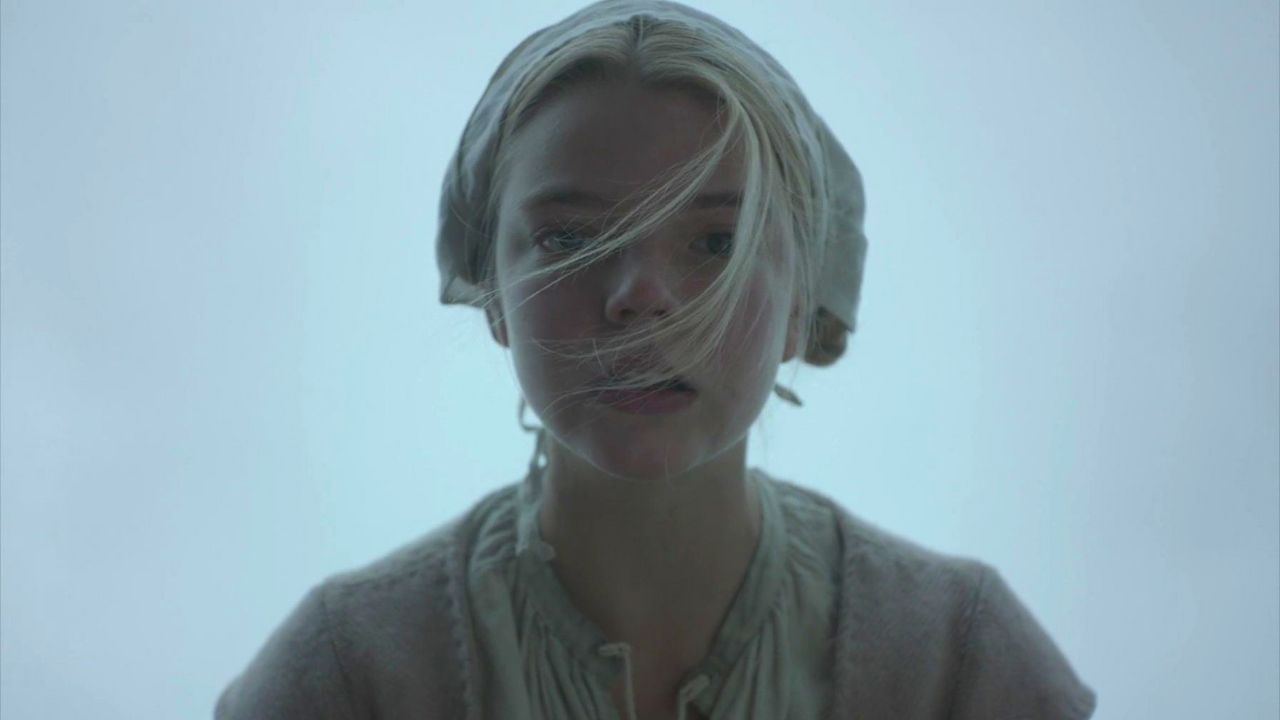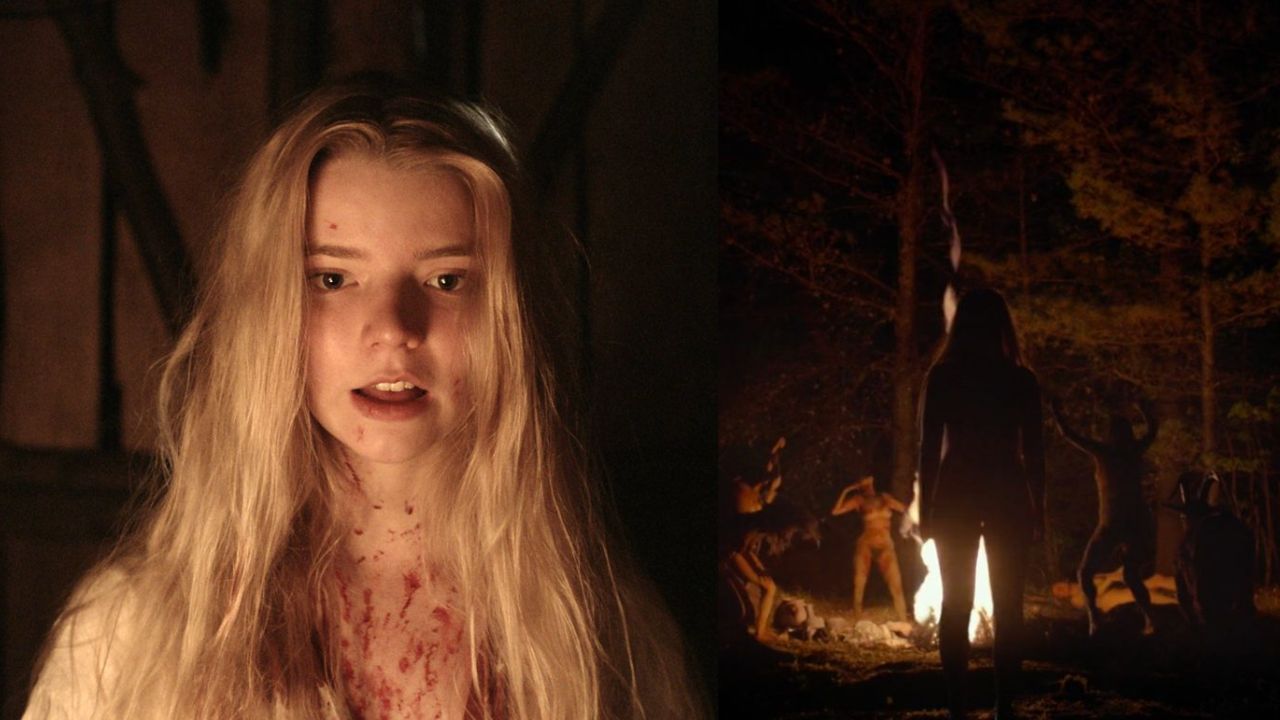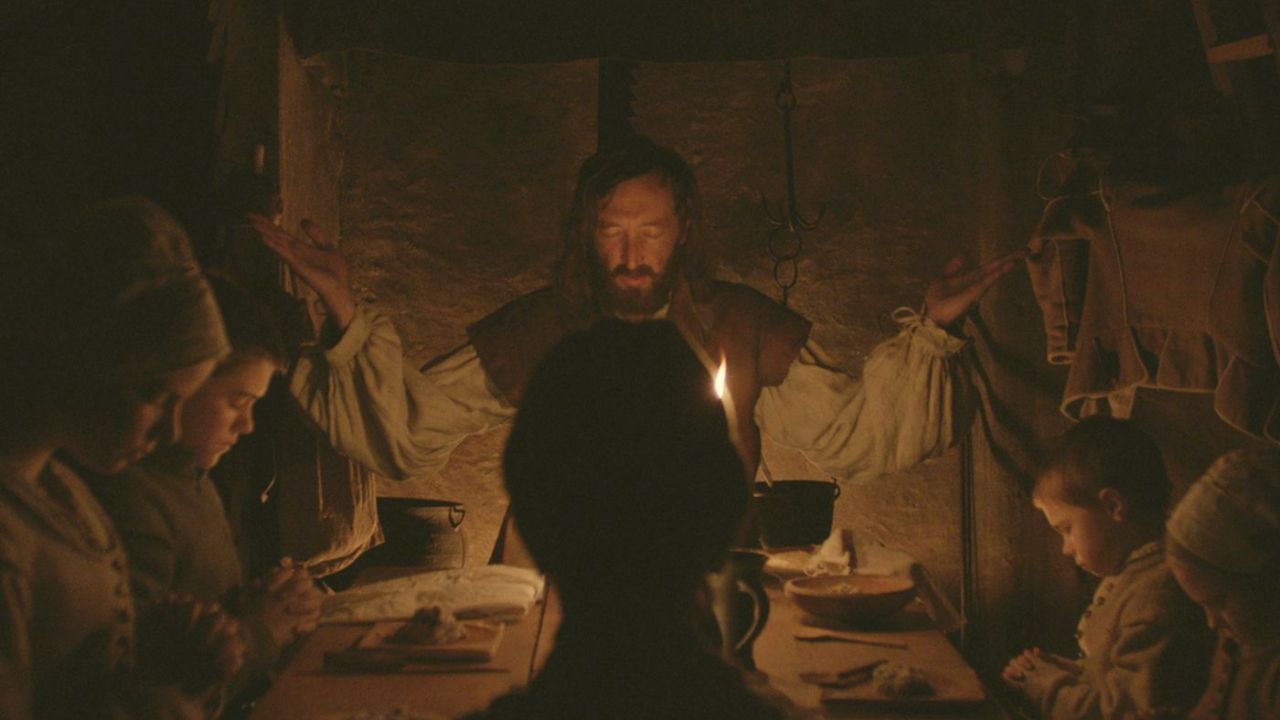This post includes a brief plot summary and an explanation about the ending of the 2015 film “The Witch”.
Directed by Robert Eggers, the horror film stars Anya Taylor-Joy as Thomasin, Ralph Ineson as William, and Kate Dickie as Katherine. Beware of spoilers.

“The Witch” takes place in the 1600s and it tells the story of a family who moves to a farm near a forest. Shortly after, they start experiencing a series of misfortunes and tragedies. Their nightmare begins with the disappearance of their newborn, Samuel. A woman took him away when the eldest daughter (Thomasin) was playing with him.
What Is Going in “The Witch”? (Plot Explained)
After a religious dispute, William and his family are banned from their settlement. As a result, they move somewhere else, to a remote area. Right from the start, the family encounters enormous difficulties. It’s hard to live off the land, nothing seems to grow, and there aren’t many animals for them to hunt.
Samuel’s tragedy takes a toll on the family, and they never learned the truth about what happened to him. The newborn was sacrificed and used in a sort of ritual by some old woman living in the woods. Since Thomasin was the last one to see him alive, her mother (Katherine) blames her for what happened.
While William tries to keep his family together, more tragedies fall upon him. The next person to go down in the family would be the eldest son, Caleb. During a hunting trip, he runs into a witch disguised as a young woman. After their encounter, the boy becomes delirious. During his final moments, Caleb prays and proclaims his love for Christ. Then he passed away.
Meanwhile, the twins (Mercy and Jonas) accuse Thomasin of being a witch. For a moment, William believes that Thomasin is indeed a witch. However, the latter denies the accusations and claims that the twins have been bewitched by the goat Black Phillip. As a result, William locks Thomasin, Mercy and Jonas in the barn with Black Phillip.
Meanwhile, Katherine starts to hallucinate with Caleb and Samuel. The next day, Williams finds his barn destroyed, the goats dead, and Thomasin liying unconscious. Also, there are no signs of the twins. While William witnesses the bizarre sight, Black Phillip ambushes him and kills him with his horns.
When Katherine steps outside, she loses her mind and tries to kill her daughter. In self-defence, Thomasin fatally wounds her mother. After the carnage, Thomasin falls asleep. When the young girl wakes up, she summons Black Phillip. In a human voice, he asks if Thomasin wants to “live deliciously” and she says “yes”.
The Ending of “The Witch” Explained
The ending of “The Witch” shows Black Phillip guiding Thomasin to sign her name in a book. After that, they both head to the woods, where Thomasin finds a group of witches dancing around a bonfire. She joins them and smiles while she ascends.
There are many possible interpretations for the ending of “The Witch”. The film leaves things out in the open. Instead of informing its audience about Thomasin’s fate, it prefers to let its viewers form their own opinions based on their personal beliefs.
The ending of “The Witch” is a reflection of the themes of the film, such as religious fanaticism, superstition, and identity. Having said that, here are some possible meanings for the ambiguous ending of “The Witch”.

Ending Meaning no. 1: Thomasin succumbed to the devil’s temptation and joined a coven of witches in the woods.
In the end, the dark forces got what they wanted. Thomasin has renounced her faith, her family, and her innocence in exchange for a life of freedom and power. This reading suggests that the witches have been plotting from the very beginning to gradually destroy the family from within.
Ending Meaning no. 2: Thomasin has liberated herself from the oppressive and patriarchal society.
The final scene suggests that Thomasin always had some type of darkness inside her. After finding herself, Thomasin finally embraced her true nature. Along the way, she found a community of women who accepted and empowered her. The carnage was an act of rebellion against the oppressive environment around her. That was the price that Thomasin had to pay to have a chance to “live deliciously”.
Ending Meaning no. 3: Thomasin hallucinated the whole scene of flying with the witches in the woods.
After killing her mother in self-defence, Thomasin lost her mind. Becoming part of another community was her coping mechanism for the massive loss that she just had to endure. In reality, there are no witches waiting for her. In the end, Thomasin is all alone in an extremely remote area with no one to help her.
What is my interpretation of the ending of “The Witch”? In my opinion, I believe that Thomasin joined the coven and the “dark side” because she wanted to live differently. Up until her parents deaths, she had no say about her life. The girl did what they told her to do, no one in the family ever asked Thomasin about her wants and needs.
The tragic death of her family, ironically, set Thomasin free. She no longer has ties to a world ruled by religious fanaticism, oppression and deprivation. Black Phillip presented Thomasin with an offer that is hard to refuse: a world of freedom where she gets to experience the “good things” and “live deliciously”.
What went wrong in “The Witch”?
The supernatural element of the film is debatable. One could say that the witches were real. In this case, Black Phillip is indeed Lucifer, and the witches are working for him. Or one could say that the witches are not real, they are just a metaphor or a projection of the family’s personal tragedies and misfortunes.
For a moment, let’s consider that the witches are indeed real in “The Witch”. Although these individuals possess immense power, they were not the sole cause of the family’s downfall. There were other factors and existing problems that would eventually lead to their demise.
First of all, the family moved to an inhospitable place. Their living environment was harsh, which made them vulnerable to famine, cold and illnesses. Also, they had no access to education, which would explain their superstition and paranoia.
Second, there was already a certain divide in the family. The father was a prideful and stubborn individual. He brought his family to a remote and almost inhabitable area just because of his religious beliefs. Not only that, but William refused to seek help until it was already too late. This caused a lot of resentment in his wife, Katherine. However, instead of taking her anger out on William, Katherine blamed it all on her eldest daughter.
Third, every family member (except for Thomasin) was already sinning in a certain way. For instance, William is guilty of being prideful. Katherine herself admitted that there was very “little warmth in her heart”, meaning she was bitter and resentful. The children also had flaws. Caleb had lustful thoughts about his older sister. Mercy and Jonas often spread lies and took great pleasure when they falsely accused Thomasin of being a witch.

Having said that, the family’s tragic end was not only caused by supernatural forces. A lot of their misfortunes were brought on by themselves and their character flaws. In a way, the devil didn’t cause the family’s downfall, he just gave them a “little push”.
Final Thoughts
The most terrifying aspect of “The Witch” is not the supernatural element surrounding the family. There is something far more scary, which is the oppressive environment that religious fanaticism creates.
William and his blind “faith” led him to move his family to a remote and harsh environment. It’s obvious that the new place significantly deteriorated their quality of life, which makes me seriously question their life choices. For what? What is so virtuous about deprivation?
In addition, it was shocking to see a father who was willing to turn his daughter over to some “witch hunting” authorities. And for what? Just because someone pointed the finger at her. Two little brats, to be more precise, who falsely accused Thomasin of being a witch.
By the way, the events of “The Witch” take place before the infamous “Salem witch trials”. But it does give a glimpse of the general environment of that era. Basically, people were living in fear and turning against each other for the most trivial reasons.
The atmosphere of “The Witch” really set the tone for the film. Many horror films rely on gore, violence and jump scares to scare the viewer. However, “The Witch” differentiates itself by taking advantage of its surroundings and adding dread to mundane activities. For instance, it was frightening to watch a newborn disappear during a peek-a-boo game.
Overall, “The Witch” is an interesting watch because it shows the complexity of human nature. Initially, the family took great pride in themselves for being “good followers”. But then adversity struck, and they started showing “different colours”. Although some might feel puzzled by the ambiguous ending, I actually like it that way. The open ending challenges the audience to form their own ideas about what happened to Thomasin.


